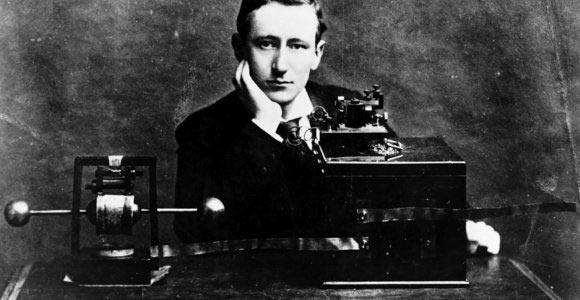Guglielmo Marconi invented “Wireless Communication”
Guglielmo Marconi was an Italian inventor, engineer and physicist, widely known as the “Father of Radio”. He was born into an Aristocratic Italian family in 1874. He received private education at Bologna, Florence and Leghorn. As a child, he was keenly interested in physical and electrical science and poured over the works of experts in the field, such as Maxwell, Hertz, Righi and Lodge.
He conducted experiments at his home and succeeded in transmitting wireless signals over a distance of 1.5 miles. He tried to gain recognition in Italy but was unable to generate much interest there so he took his ideas to London. There he was introduced to Sir William Preece, chief engineer of the British Post Office. With his guidance and help, Marconi was able to develop and patent the world’s first system of wireless telegraphy in 1897, just within a year of having arrived in London. In July 1897, he formed “The Wireless Telegraph & Signal Company Limited” (This was later renamed “Marconi’s Wireless Telegraph Company Limited” in 1900). In 1899, he established wireless communication between France and England, across the English Channel. He also transmitted the first wireless signals across the Atlantic, a distance of 2100 miles, between Cornwall and Newfoundland.
In the decade between 1902 and 1912, he took out several patents for new inventions, including the “magnetic detector” which served as the standard wireless receiver for many years. His system of radio telegraphy was responsible for the rescue of the 700 survivors of the Titanic crash in 1913. In 1914, he joined the Italian Army as a Lieutenant and later got promoted to the rank of Captain. In 1916, he joined the Navy as a Commander. He was a member of the Italian Commission to the US in 1917 and a delegate of the Paris Peace Conference in 1919. He also received a medal for war service in 1919.
He established the “beam system” for long distance communication which was accepted by the British government as a means of imperial communication, leading to the first beam station linking England and Canada. His research led to the establishment of the world’s first microwave radiotelephone link, set up between the Vatican City and Castel Gandolfo. He was also instrumental in setting up the British Broadcasting Company in 1922.
Guglielmo Marconi won the Nobel Prize in Physics in 1909, which he shared with Professor Karl Braun. His receipt of the prize was controversial as many inventors claimed that Marconi’s achievements were dubious. Some of his patents were in fact cancelled and subsequently awarded to Nikola Tesla. In 1914, Marconi was made a member of the Italian senate and also appointed as the Honorary Knight Grand Cross of the Royal Victorian Order in the UK. In 1923, Marconi joined the Italian Fascist party and became an active supporter of Mussolini.
He was first married in 1905 to the Hon. Beatrice O’Brien with whom he had four children. He divorced her in 1924, and had the marriage annulled in 1927 so he could remarry Maria Cristina Bezzi-Scali. His best man at his second wedding was Mussolini. Marconi left his entire fortune to his second wife and their child. Other than the Nobel Prize, Marconi received several honorary doctorates and international awards such as the Albert Medal of the Royal Society of Arts, the John Fritz Medal, the Franklin Medal and the Kelvin Medal. There are several statues of him worldwide and places have been named in his honor all over the world.
